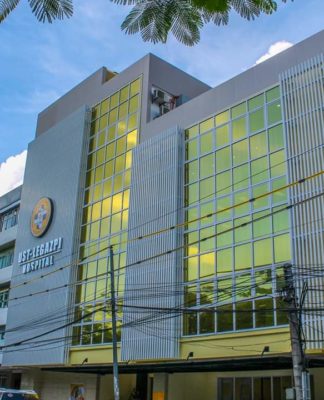Because of its geological setting, the Philippines often experiences natural disasters. The Southern Leyte landslide last Feb. 17, which killed 150 people, displaced thousands, and buried over 900 people below nine meters of mud and soil, is just one tragic example.
Landslides include a wide range of ground movements such as rock falls and shallow debris flows. Gravity, say geologists, is the primary mover of soil, thus, landslides often occur on steep slopes. The steeper the slope, the greater the likelihood of ground instability.
Apart from allegations that the Southern Leyte landslide was caused by widespread logging and mining in the area, the two-week torrential rains were recorded to be five times heavier than normal. The loosened soil resulted in sludge and rocks thundering down the slopes of nearby Mount Can-abag. Prior to the landslide, the Philippine Institute of Volcanology and Seismology also recorded a 2.6-magnitude earthquake in Southern Leyte.
The municipality of Saint Bernard was one of the worst-hit areas. Around 200 are believed dead (23 confirmed), and another 1,500 missing. Meanwhile, Barangay Guinsaugon, a mountain village of over 2,500 inhabitants, was almost completely destroyed.
Fearing a similar tragedy may occur again, President Gloria Macapagal-Arroyo has ordered the release of P80 million in state funds to speed up the mapping of geological hazards in the country. By having detailed and well cartographed geologic maps, subsurface geological features can be identified, allowing the government to observe affected areas more rigorously.
The President said at least 1,500 towns and villages in the country have been identified as under immediate threat from landslides, floods, and other natural disasters.
Science and Technology Undersecretary Graciano Yumul told the Associated Press that the entire eastern seaboard of the Philippines, composed mostly of volcanic islands lying within the unstable Philippine Trench, faces the same risk as Leyte. According to Yumul, the Mines and Geosciences Bureau of the Department of Environment and Natural Resources, has already identified the high risk areas, from Cagayan in the north to Davao Oriental down south.
Maximizing technology
While predicting the size, location, and timing of natural hazards is virtually impossible here, earth scientists in other countries are able to forecast natural disasters like landslides using the latest technologies.
Unfortunately, other than geo-hazard mapping, which is yet to be updated and completed, the Philippine government has employed no other advanced technologies against landslides.
In India, the Building Materials and Technology Promotion Council of New Delhi and Centre for Disaster Mitigation & Management of Anna University in Chennai, have prepared the landslide Hazard Zonation Atlas of India to prevent and mitigate the traditional policy of response and relief in post-disaster situations. The atlas is the first Geographical Information System-based landslide inventory map in India, tasked to face the impact of future landslides, which also affect large parts of the country, especially in the Himalayas.
Meanwhile, Michael Ellis of the University of Memphis in Tennessee, United States, is mapping storm-induced landslides using Synthetic Aperture Radar (SAR) data to calibrate a landscape evolution model developed by NASA that can predict the influence of short-term climate changes on hazard areas. SAR complements photographic and other NASA optical imaging capabilities, but it can only be used by moving instruments like satellites over relatively immobile targets.
On the other hand, fractals, are also being employed by the US Federal Emergency Management Association for predicting movements of the earth. Fractals are mathematical formulas that use patterns hidden within more complex systems, and repeat over a wide range of sizes and time scales. In the past, earth scientists have relied only on statistical methods to forecast natural calamities.
For now, 500 American Marines dispatched from the RP-US Balikatan military exercises and soldiers belonging to the 8th Infantry Division are still helping relocate around 400 who escaped the landslide and many others evacuated from nearby villages.
Recent technological innovations have now made it possible to predict natural calamities like landslides. Mary Joy T. de Lara and Laurence John R. Morales
















